Case Studies.
Add Case Study
Our Case Study database tracks 18,927 case studies in the global enterprise technology ecosystem.
Filters allow you to explore case studies quickly and efficiently.
Download Excel
Filters
-
(5,794)
- (2,602)
- (1,765)
- (764)
- View all
-
(5,073)
- (2,519)
- (1,260)
- (761)
- View all
-
(4,407)
- (1,774)
- (1,292)
- (480)
- View all
-
(4,158)
- (2,048)
- (1,256)
- (927)
- View all
-
(2,488)
- (1,262)
- (472)
- (342)
- View all
- View all 15 Technologies
- (1,732)
- (1,626)
- (1,605)
- (1,461)
- (1,423)
- View all 42 Industries
- (5,782)
- (4,114)
- (3,091)
- (2,780)
- (2,671)
- View all 13 Functional Areas
- (2,568)
- (2,482)
- (1,866)
- (1,561)
- (1,537)
- View all 127 Use Cases
- (10,333)
- (3,499)
- (3,392)
- (2,982)
- (2,593)
- View all 9 Services
- (503)
- (432)
- (382)
- (301)
- (246)
- View all 737 Suppliers
Selected Filters
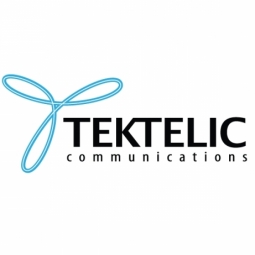
|
IoT for Smart Agriculture
Monitoring and assessing key welfare indicators such as weight, water consumption, temperature, humidity, and CO2 levels within poultry houses is essential for ensuring sustainable and productive poultry farming practices. However, assessing these indicators in large poultry farms that rear millions of birds each year is no easy undertaking.A customer managing 700,000 birds across 7 farms required a solution to wirelessly monitor parameters including climate, water consumption, and bird weights. Prior to implementing the PrognositX - Poultry Sense IoT solution, this customer manually took readings of temperature and humidity conditions and input those values into a spreadsheet. This proved to be a lengthy and increasingly inefficient process. Conditions in every shed and farm can vary, and with increasingly stringent audit requirements, the customer required a solution that would enable them to efficiently and consistently capture, track, and interpret real-time data.
|
|

|
Beach & Water Reservoir Monitoring Platform
Catalan Water Agency is responsible for the overall management and supervision of the water reservoirs of Catalonia region. Part of its Big Data strategy was to find a monitoring system to surveil, manage and supervise in real-time the coastal areas (including swimming and non-swimming beaches), the water and its quality.
|
|
---nasdaq--eric_1.jpg)
|
Automation in Mining: Unleashing Productivity and Efficiency with 5G
The mining industry, a significant contributor to global economic activity with revenues exceeding USD 500 billion, is facing a challenge of improving efficiency and profitability. The industry is gradually shifting its focus towards automation as the next area of opportunity. Boliden, one of the world's most successful mining companies, operates the Aitik mine, the largest open pit in Europe. The Aitik mine is expanding, and with the increase in production from 36 million metric tons of ore to 45 million metric tons, the amount of rock removed will also increase significantly. However, increasing the number of machines required for rock removal in a busy mine is not a straightforward task. Additionally, every blast creates toxic gases that need to dissipate before humans can enter the area and begin excavation. The challenge lies in improving efficiency, managing the increased production, and ensuring safety in the harsh mining environment.
|
|

|
ANZ Bank's Digital Transformation with Nintex Advanced Workflow
ANZ Bank, one of the top 50 banks in the world and the fastest-growing bank in Indonesia, was facing a challenge with its rapidly increasing transaction volume. The bank's existing business processes and workflow were becoming overwhelmed. Like most banks in Indonesia, ANZ was manually handling document submission and verification. Customers filled out paper loan applications and supporting documents, then delivered them to bank branches by mail or courier. Branch officers traveled to the bank’s headquarters or used postal mail, email, and phone calls to submit loan documents for verification. Lost or inaccurate documents created more emails and phone calls. Additionally, ANZ had to adhere to strict verification and financial regulations, including the Foreign Accounts Compliance Act. This act requires that all banks outside the United States provide key information about U.S. clients, including citizenship validation, to the Internal Revenue Service–a complex yet crucial process.
|
|
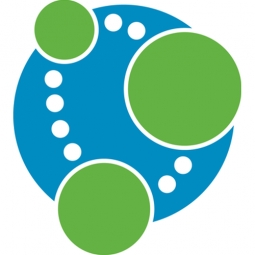
|
UBS Enhances Risk Management and Compliance with Neo4j Data Lineage Tool
UBS, a multinational investment bank and financial services company, was faced with the challenge of complying with regulations put in place to strengthen systems for risk data aggregation and internal risk reporting following the 2007 global financial crisis. Specifically, UBS needed to comply with the Basel Committee on Banking Supervision issued standard 239 (BCBS 239). This regulation required banks to provide transparency into the data flows that feed their risk reporting, necessitating broad data governance and detailed data lineage. Data lineage, which involves tracking the entire lifecycle of information, is a crucial component of risk management. UBS initially built an application called Group Data Dictionary (GDD) as its data lineage and data governance tool on Oracle. However, they soon discovered limitations with an RDBMS approach, which relies on JOINS to connect data across tables. UBS realized it needed a better solution for creating real-time data lineage visualizations and exporting lineage information for ad-hoc analysis via Excel.
|
|
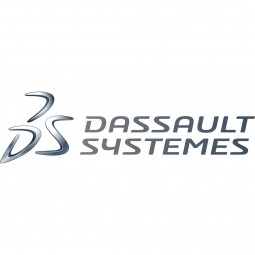
|
Flow Robotics: Scaling Up Production and Accelerating Product Development with IoT
Flow Robotics, a Danish manufacturer, developed flowbot™ ONE pipetting robots to alleviate the strain on bioanalysts in life-science laboratories and hospitals across Europe. These robots were designed to automate part of the testing process, speeding up the time it takes to produce results and reducing pressure on staff. However, the company faced challenges in scaling up production and accelerating product development. High workloads and physically challenging conditions have long been an issue for laboratory professionals. Flow Robotics estimates that around half of medical lab technicians carry out the same arm movements for at least a quarter of their working day. The American Society for Clinical Pathology reported that 85% of laboratory professionals feel burnt out; 36% struggle with inadequate staffing; and 32% face a heavy workload and pressure to complete all testing on time.
|
|

|
Smart Monitoring Solutions for Solar Panels: A Case Study
In 2018, the Japanese government approved the Fifth Energy Basic Plan, prioritizing renewable energy and setting it on a course to become the primary power source in Japan. This led to the re-introduction of solar panels as a renewable energy source. However, renewable energy sources such as solar power have weaker 'bearing capacity' than other power generation methods due to their characteristics. Solar power can be challenging to control because the output fluctuates based on weather conditions. If a large amount of electricity is supplied from the photovoltaic power generation sources to the grid when the power demand is low, the voltage and frequency can be disturbed, and the entire grid can become unstable. In some cases, it can lead to a large-scale power outage. This risk necessitated developments to solve problems like monitoring and controlling the amount of electricity produced by solar panels. NWC partnered with a client that generates and sells electricity serving residential, commercial, and industrial customers. The client needed to monitor the amount of electricity produced by 88,000 solar panels with a power generation capacity of 28 MW/h in a field size of 700 x 700 meters. The initial idea was a 13 kilometer wired optical network; however, the cost of over 1 billion yen made this approach expensive and impractical.
|
|

|
Improving Manufacturing Processes with Essilor
Seeing that one of their goals is to find ways to better answer consumer and business needs, the Global Engineering (GE) team was facing the challenge of improving processes and performance of the surfacing machines to significantly improve their production by using the increasing volume of data."We wanted a data science platform that would allow us to solve our business use cases very quickly. Thanks to Dataiku and its collaborative platform, which is agile and flexible, data science has become the norm and is now used more widely within our organization and around the world," said Cédric Sileo, Data Science Leader at Global Engineering, Essilor.
|
|
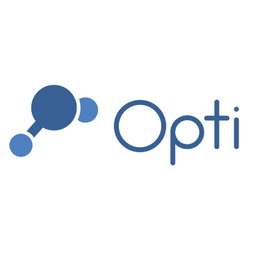
|
Hydromodification
An undersized wet pond outside of Portland needed intelligent flow control function and hydromodification for improvements to water quality.
|
|

|
Permeable Pavement Allows for Sewer Overflow Reduction
The City of Omaha enlisted Opti to actively test the effectiveness of permeable pavements and real-time stormwater management as Best Management Practices.
|
|

|
AI-based Automation for Commercial Office HVAC: A Verdigris Case Study
Modern buildings are required to run longer hours, support a variety of end uses, and contribute to higher levels of economic productivity, leaving a thin margin for error. However, even the most advanced building and environmental control systems have failed to adequately support facilities and operations management. Buildings are often inefficient and the people using them are underserved. To meet occupant comfort and maintain cost and energy efficiency, a dynamic, AI-assisted approach is needed.
|
|

|
Delhi NCR Metro: A Mobile App Revolutionizing Public Transportation
The Delhi NCR Metro, a major public transportation system in India, was facing a challenge in providing accurate and comprehensive information to its daily commuters and tourists. The lack of a centralized platform for information about metro station details, train schedules, fare details, parking, elevators, and tourist locations was causing inconvenience to the users. The challenge was to develop a mobile app that could provide all this information accurately and conveniently. The app needed to be equipped with GPS services to help users find the nearest metro and renowned locations. An interactive map was also required to assist travelers who were familiar with the metro lines. The goal was to provide maximum information with minimum input.
|
|

|
Automated Railcar Inspections Increase Security and Revenue
Providing industry and government customers with intelligent inspection, automation, safety, and security solutions, Duos Technologies Group, Inc. (“Duos” or the “Company” - Nasdaq: DUOT) continually pushes the boundaries of IT. To keep pace with expanding AI-enabled data capture analytics for its edge railcar inspections, the company chose the latest Dell EMC PowerEdge servers.Duos Technologies’ challenge was finding a way to leverage technology as a force multiplier to meet customer requirements for a better, faster inspection process for trains running at full speed. Duos developed innovative data analytic solutions with AI at the edge to conduct more reliable railcar inspections, which are available 24/7/365 in all climates and conditions.
|
|

|
IBM GRAF from The Weather Company
The Weather Company, an IBM Business, offers the most accurate forecasts globally – more than 25 billion per day – with personalized and actionable weather data and insights. The Weather Company is challenged to accelerate the computations in weather models in order to provide more precise and accurate forecasts.Weather forecasting in the United States and other developed nations is more accurate than in other more remote parts of the world. The Weather Company saw an opportunity to advance accurate weather predictions globally by leveraging the IBM GRAF.
|
|

|
Scalable IoT Empowering GreenFlex's Sustainable Growth
GreenFlex, a company that supports sustainable development, decarbonization, and energy efficiency, faced several challenges in its quest to expand its business. The company needed to deploy a robust and sustainable IoT technology to support its growth. It was crucial for them to monitor and control devices at customer sites in a safe and reliable manner. They also needed to integrate devices across a range of communication protocols and gather and act on data to meet efficiency targets. GreenFlex had previously built IoT capabilities into its digital platform, GreenFlexIQ, to monitor and manage customer sites remotely. However, they soon realized that they needed a new platform to support their ambitions. They needed a platform that could scale to connect more devices for production management and make it easier for the operations team to manage devices in the field.
|
|
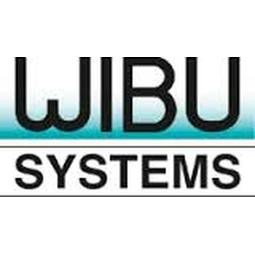
|
Protection and Licensing in Chemical Analytics
For the launch of its new OMNIS product line, a titration platform for chemical laboratories, Swiss Metrohm AG required a protection system to safeguard the know-how invested in its software and a flexible licensing system that would allow for the creation of customized software licensing models for its laboratory instruments. One specific requirement posed by the company was the necessity to integrate the licensing and entitlement solution seamlessly with the company’s existing back office systems.
|
|

|
Global fully-virtualized SAP
Deliver a global, agile, high-performance application delivery platform that improves service delivery and productivity.
|
|

|
Novartis Leverages IoT for Enhanced Drug Discovery
Novartis, a global healthcare company, was faced with the challenge of managing and making sense of a vast amount of data. The company had decades of data on how various compounds affect protein targets, with about a billion data points in total. This historical data was critical but sparse compared to the granular data currently being collected. Novartis uses an automated process that captures high-content image data showing how a particular compound has affected an entire cell culture, generating terabytes of phenotypic data. The challenge was to combine this historical data with the burgeoning phenotypic data and place it within the larger context of ongoing medical research from around the world. The team also wanted to combine its data with medical information from NIH’s PubMed, which contains about 25 million abstracts from some 5,600 scientific journals.
|
|

|
Ray Devices: Independence for Blind and Visually Impaired People
» 285 million people worldwide are visually impaired: 39 million are blind and 246 million have low vision. » About 90 percent of the world’s visually impaired people live in developing countries. » About 65 percent of visually impaired people are 50 and older; an estimated 19 million children worldwide are visually impaired. » Today, blind and visually impaired people use a simple mobile phone for daily telephone communications. They also use an array of specialty devices, such as audio book-readers, color readers, navigation tools, raised Braille labels, special bar-code scanners, and large-buttoned Braille-raised MP3 players. Each device has a unique UI, and the lack of integration makes them difficult to use. Collectively, these devices are prohibitively expensive.» Audio-books, magazines, and periodicals are an important form of entertainment for blind and visually impaired people. However, no timely, secure, affordable system exists today to provide these materials.
|
|

|
Edge Solutions for Smart Monitoring of HVAC Manufacturing: A Case Study on Daikin India
Daikin India, a leading HVAC solutions provider, was seeking to optimize energy efficiency and productivity at its factories. The company wanted to implement an equipment monitoring and data collection solution for its HVAC subassembly lines. However, the challenge was that these lines featured numerous programmable logic controllers (PLCs), which limited the available installation space and network capabilities. Therefore, Daikin India needed a compact yet versatile solution for acquiring and visualizing production data without high networking/infrastructure costs. The company also required a system that supports smart real-time monitoring of HVAC subassembly lines, enables seamless acquisition and visualization of equipment data, minimizes and streamlines data transmissions, offers configurable PLC I/O data collection flexibility, and provides reliable industrial-grade hardware.
|
|
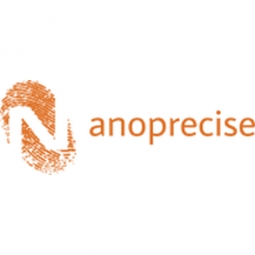
|
Detection of a Bearing Outer Race Failure on a critical pump saved downtime cost
The process condensate pump, one of the critical pumps in the manufacturing process, has a history of failures every 6 to 12 months. It is a centrifugal pump operating at 3000 rpm with a discharge pressure of 28 MPa (400 psi). Each day this pump is offline, it costs the plant as much as $145,000 in lost production and each failure costs tens of hundreds of dollars to execute an unplanned repair. Nanoprecise Sci Corp was asked to implement a predictive maintenance solution in order to detect faults at an early stage and provide a reliable prediction of Remaining Useful Life (RUL).
|
|

|
Sharing the Positive Energy-Connecting Pan-European EV Charge Stations
The New Motion were looking for a second supplier for cellular network connectivity with proven reliability, good debugging capabilities as well as competitive prices. “With each EV charge station expected to have a lifespan of 5-10 years, it is imperative that our suppliers understand our need to have reliable and future proof solutions.”- Remi Caron, Chief Technology and Innovation Officer , The New Motion.
|
|

|
Launching a Life Changing Product
M-KOPA is a mobile technology company based in Nairobi, Kenya. The M-KOPA team includes founders and senior management from the Vodafone and Safaricom award-winning M-PESA service. It was formed to make accessible a range of life changing products.Even before forming the company the M-KOPA team realised that there were going to be considerable challenges in designing and managing such a product, so they sought out M2M experts with a reputation for delivering complex solutions.
|
|
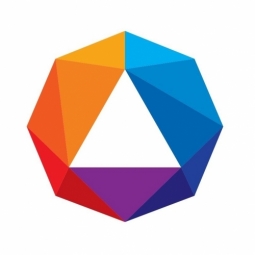
|
Simeco Streamlines Teka Oven Line Assembly with RFID
Simeco is the manufacturer of Teka premium cooking appliances. Teka strives to combine quality, convenience and efficiency in everything they do, to achieve the best solution for its customers. The joint effort to provide “meaningful experiences” for their customers begins at Simeco’s 24,000 square meter manufacturing facility, which has the capacity to build 500,000 units a year, on its six production lines. It is at this site where the company manages the materials used for assembly, the assembly process itself, and also constantly seeks ways to improve efficiency and eliminate errors.As part of that effort, Simeco wanted a technology-based solution that would automatically monitor the receipt and consumption of materials, as well as the work taking place on its production lines, and automatically detect and prevent any errors in the testing and control processes.The company wanted the technology not only to bring real time visibility into its product processes, it wanted a way to manage the overall equipment effectiveness (OEE) as well.Simeco needed an automated system to be able to detect and identify when an error could be made in mounting components, as well as provide support for assembly workers by displaying relevant instructions on the assembly floor. The technology also needed to be able to capture analytical data so the company could continue to improve its processes.Litum’s UHF RFID solution automatically tracks a tagged component or unit as it moves through assembly. With location and status data from the solution, the software can provide contextualized information to those on the assembly floor and to managers overseeing processes, historically as well as in real time.To ensure the technology would meet the company’s needs, Litum customized the solution, thereby reducing costs. One example was the engineering of the tags themselves: Litum worked with Simeco to develop a reusable tag, thereby increasing sustainability and reducing cost. The reusable tags, attached and detached with a specialized assisting tool, uniquely identify a component, and can be detached and reused on subsequent assembly processes.Litum also specially designed the middleware to integrate with the brand's existing manufacturing system. The result is a software platform known as the Simeco Traceability Software.
|
|
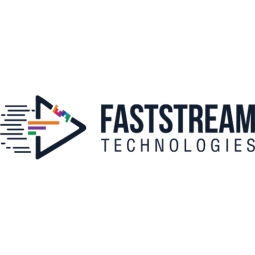
|
Show Pro
ServerAfter clicking on Live Mode, It will share a server IP address to track the event in the browser of the device and pc as well.Specific RequirementsInputs• Enter show information and click on the design show button• Set the show Start Time and End Time• Fill in all the details in cue sheets like user details, Action, and notes.Key Problems• Admin cannot share private notes and shared notes when it is in live mode• We cannot remove a particular user in live mode• We are not able to write and share the private note in iPad
|
|

|
Optimizing the tourism travel experience in Switzerland
Arcade Solutions AG is an IT and IoT company based in Lucerne Switzerland that has been revolutionizing the travel tourism industry. Arcade is the proud creator of an application called the iParkiere Bus smart travel tourism and parking application which is now the primary navigation application for all coach drivers in Switzerland.
|
|
---nasdaq--amzn_14.jpg)
|
Atlassian's Solution on AWS
At Atlassian, growth is on a fast track. The company adds more customers every day and consequently needed an easy way to scale JIRA, which is growing by 15,000 support tickets every month. The instance supporting this site was previously hosted in a data center, which created challenges for scaling. “The scale at which we were growing made it difficult to quickly add nodes to the application,” says Brad Bressler, technical account manager for Atlassian. “This is our customer-facing instance, which gathers all the support tickets for our products globally. It’s one of the largest JIRA instances in the world, and growing and maintaining it on premises was getting harder to do.” For example, the support.atlassian.com instance was hosted on a single on-premises server, which the company needed to frequently take down for maintenance.The company also needed to ensure high availability for JIRA. “This is a mission-critical application, and the number of customers potentially impacted by downtime is huge,” says Neal Riley, principal solutions engineer for Atlassian. “As we grew, we became more concerned about the resiliency and disaster-recovery capabilities of the data center.”To move into a more scalable, highly available environment, Atlassian created JIRA Data Center, a new enterprise version of the application. However, JIRA Data Center required shared storage. “We needed a shared file system so the individual application nodes could have a shared source of truth for profile information, plug-ins, and attachments,” says Riley.
|
|
|
|
Albuquerque Bernalillo County Water Utility Authority
The problem of meter inoperability was driven by several process issues, including large backorders of work orders, a lack of system integration with their enterprise asset management system, manual data entry processes, poor data integrity and the use of multiple systems for work order tracking.Albuquerque Water needed a workforce management solution that would move them from their paper-based service order environment to complete automation of service order work. The utility determined they required a solution that was fully integrated with their enterprise asset management system and provided clear processes to transform their field operations, and at the same time reduce costs and achieve meter maintenance.
|
|
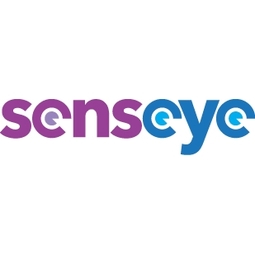
|
Scalable Predictive Maintenance in INSEE
SCCC had committed to running a showcase Digital Factory for the ASEAN region and had already invested heavily in smart factory equipment and sensors. They required a predictive maintenance system that would leverage their existing investments and integrate with their SAP PM maintenance system.
|
|

|
Deep Learning Boosts Robotic Picking Flexibility
Gripping and manipulating items of diverse shapes and sizes have long been one of the biggest challenges facing industrial robotics. The difficulty is perhaps best summed up by the Polanyi Paradox, which states that we "know more than we can tell." In essence, while it may be easy to teach machines to exhibit a high level of performance on tasks that require abstract reasoning such as running computations, it is substantially harder to grant them the sensory-motor skills of even a small child in all but the most standardized and predictable environments.However, with the need for flexible picking to accommodate reduced changeover time for more varied product runs on the rise, industry is pursuing new solutions to the problem.
|
|

